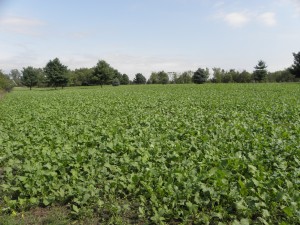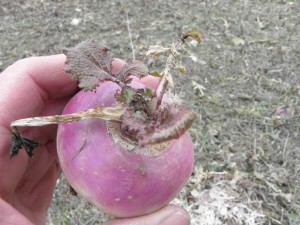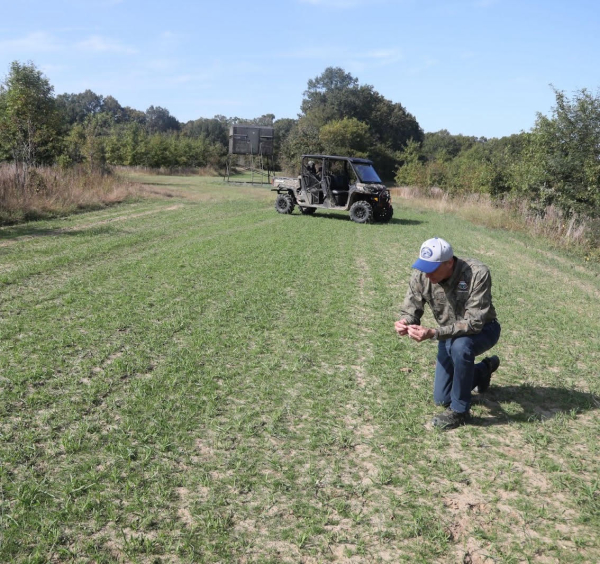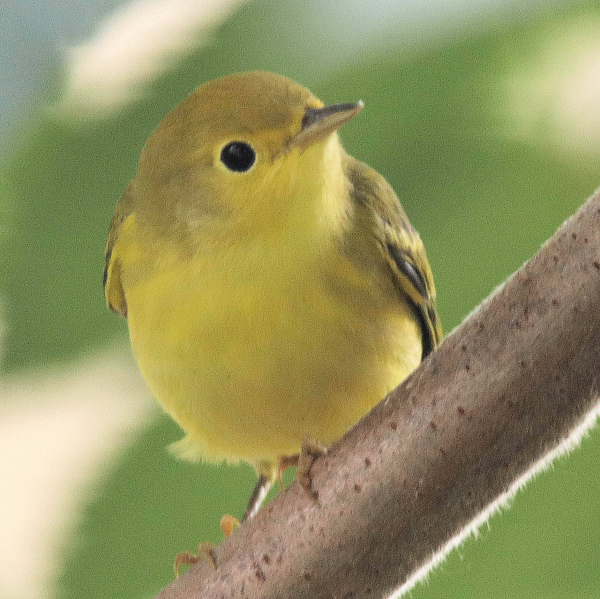Food Plots Pay Off in Cold Weather
By Glen Wunderlich
When my neighbor telephoned me a few weeks ago, there was urgency in his voice. “You should see all the deer! And, there’s a really big buck out there.” We watched together as the whitetails milled about, heads down with only one mission: eating.
Amid the brassica plot of a couple acres were a good mix of does and bucks – many of which we had never encountered during hunting season based on the headgear being displayed. Dozens of hungry deer in survivor mode had somehow passed the word that the all-you-can-eat smorgasbord was open for business. After a short visit, I had already set my sights on next season’s wide rack.
Even though we had experienced record-breaking warmth in December, a fair amount of deer routinely frequented the lush green landscape for the turnip and rape leaves. However, it now appeared as though all the deer in Shiawassee County decided to take part in the buffet bonanza.
Winter had finally arrived with high temperatures in the 20s with little snow present. However, about two inches of ice blanketed the low-growing clover and alfalfa plants, making them inaccessible. Turnips, on the other hand, protruded to please the crowd; our pact to plant turnips each year was reinforced by the sight of the feeding frenzy.
Bait piles – even small ones – have been outlawed in the Chronic Wasting Disease (CWD) management zone in which we live. Food plots are a legal exception and remain a legitimate means to draw and hold deer on a property, however.
Turnips are in a group of annual plants called brassicas, which includes radishes, turnips, cauliflower, rape and kale and are extremely high in protein and highly digestible to deer.
Protein content can range from 15 to 20 percent in both the leaves and the roots. They remain highly digestible to deer throughout the growing season and beyond and fill a nutrition gap when the going gets tough.
Turnips grow on a wide range of soils but do best on well-drained, fertile soils in full sun with a pH of 6.5 to 6.8.
Even though turnips are relatively easy to grow, the first step is to obtain a soil sample, which will indicate soil requirements before blindly throwing money at the project. Lime is used to increase the pH level and should be given a few months to break down before planting.
Preparing the seed bed will require a small tractor, an ATV, or at least a rototiller to churn up and level the soil. Spraying with glyphosate is a good means to control weeds, and if ignored, some fast-growing weeds will stunt the growth of desirable plants to the extent of failure.
Seed can then be broadcast with a hand-spreader and pushed into the ground with a cultipacker. Turnip seed is very small and should not be buried more than about 1/8 to 1/4 inch. It’s also easy to apply too much seed, and in this case more is not better, because too many plants will mean tiny, overcrowded specimens with little yield.
Fertilize at or before planting with about 300 pounds of 19-19-19 per acre to get the plants up and running but soil testing will provide a more accurate recipe for fertilizer and lime needs. After that, sit back and enjoy the show.
A great resource is Ed Spinazzola’s paperback, Ultimate Deer Food Plots or just click on the Quality Deer Management Association’s web site at www.qdma.com, where more detailed information can be found.








